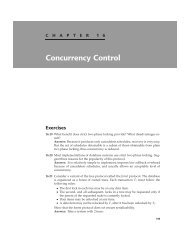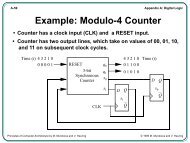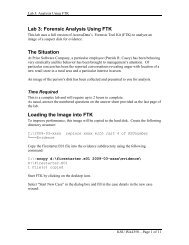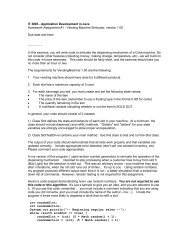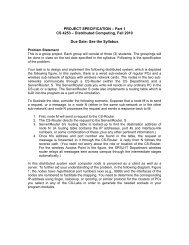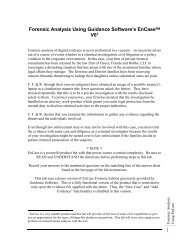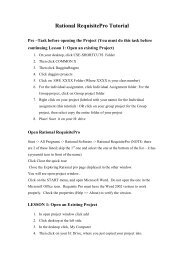You also want an ePaper? Increase the reach of your titles
YUMPU automatically turns print PDFs into web optimized ePapers that Google loves.
22.9 UML Settings Dialog<br />
DRAFT, February 18, 2003, Page 106<br />
Settings for the UML diagram. All of these settings take effect when the diagram is updated.<br />
Exclude By Type of Use - external objects (dependencies of objects in the project that are not themselves<br />
in the project) can be left out of the diagram.<br />
Exclude By Type of Class - JDK classes and interfaces, just the class java.lang.Object, and synthetic<br />
classes (those generated by the compiler that don't correspond to any source code class), can be left out<br />
of the diagram.<br />
New Node Layout - specifies which layout is applied to objects as they are added to the project.<br />
23 Settings<br />
• General Info<br />
• CSD Window Settings Dialog<br />
• Print Settings Dialog<br />
23.1 General Info for Settings<br />
There are three levels of CSD window and print settings in jGRASP; global, project, and file. Global<br />
settings apply to all files. Project settings apply to all files when the associated project is selected (there is<br />
a default project if none has been selected). File settings apply to a specific file. Each global setting can<br />
be overridden by a project setting, and each project setting by a file setting. In order to change the setting<br />
at any level (override the setting at the next level down), the "Use Default" checkbox must be checked. If<br />
it is not checked, the current default setting is displayed, and is not editable. Note that this default setting<br />
is not a fixed value, but the value of the corresponding setting at the next level down (which can be<br />
changed), or for global settings, the system default value (which could change with a new release of<br />
jGRASP - but won't unless absolutely necessary).<br />
In most cases, you will want personalized settings to apply to all CSD windows, in which case you should<br />
edit the global settings. If you use a variety of compiling environments for different projects, you would<br />
most likely edit compiler settings at the project level. Since the settings of the current project apply to all<br />
files, a single file can be used in different projects without conflict. File level settings would most<br />
commonly be used to override the default language for the file, and to add any file-specific compiler flags.<br />
Some settings, such as the CSD colors and font, can only be set at the global level.<br />
23.2 CSD Window Settings Dialog<br />
This dialog is used to set most properties not related to printing. The CSD Text and Font pages are<br />
available only for global settings.<br />
• OK Button - apply the settings and close the dialog.<br />
• Apply Button - apply the settings without closing the dialog.<br />
• Reset Button - reset the dialog to the currently active settings.<br />
• Cancel Button - close the dialog without saving the settings.<br />
• Languages Page





